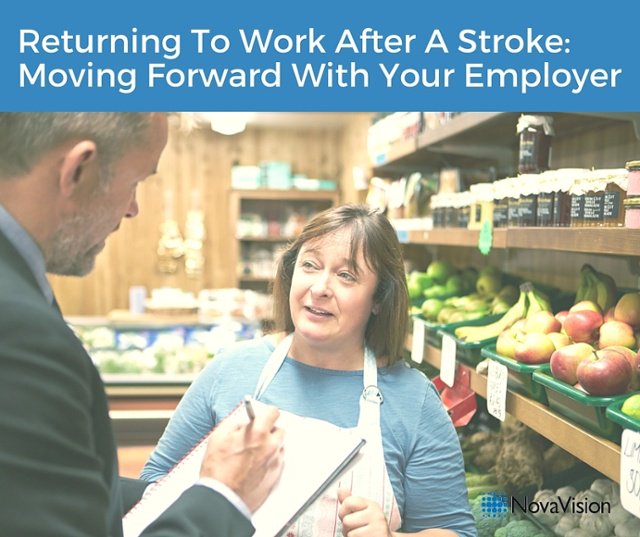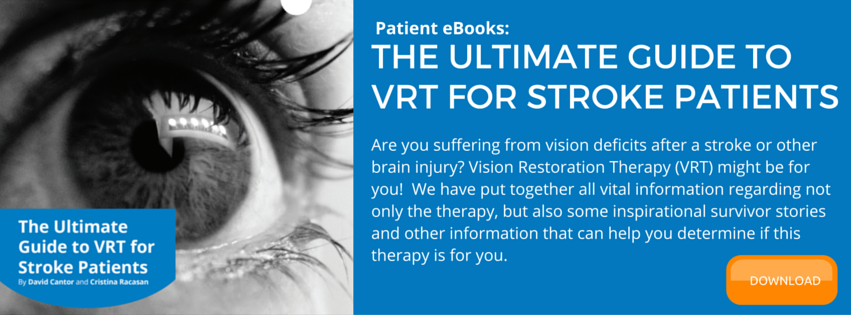
Did you know that nearly one third of all stroke victims are under the age of 65 and therefore most likely still working? For many survivors, this means a difficult return to the work place on top of an already challenging recovery. A considerable amount of people who have survived a stroke or traumatic brain injury do intend to return to work in some capacity. Unfortunately, it might take months before returning to the workforce depending on the severity of the incident and the symptoms. Whether you are struggling to reach an agreement with an existing employer or searching for an entirely new position, we’ve outlined some important steps and useful resources to help you get back on track.
Come to an Initial Agreement With Your Employer…
Our friends at The National Stroke Association have done an excellent job outlining what steps you should take to protect yourself and how to best work with your employer when you feel you are ready to return to work. First things first, once you have agreed upon reasonable accommodations to continue your employment it is imperative that you clearly put in place an accurate record of what has been agreed to. Consider using a formal Reasonable Accommodations Agreement. Having this documentation protects both parties and can prevent confusion and potential conflict down the road.
Having this formal documentation will minimize the need to re-negotiate reasonable accommodations if you find yourself changing jobs, relocating or if you are assigned a new manager in the future within the same company. This document should always be accessible to both parties and should be regularly reviewed by both the employee and the supervisor and updated when appropriate. At a minimum, this document should cover the following:
- How your disability may affect your supervisor at work.
- The needs of your employer’s business or organization.
- The organization’s attendance and reasonable accommodation policy.
- Signs and symptoms that you may be unwell
- Who to contact for help in case of emergencies.
- How and when to stay in touch if you are unable to attend work.
What Accommodations Should You Be Asking For?
The Job Accommodation Network is an excellent resource for survivors of stroke and TBI along their journey back to the workforce. They have compiled an overview of the primary job accommodations that are most useful for employees who have suffered a stroke or traumatic brain injury, particularly those with motor limitations.
Even prior to completing your tasks at work, daily life can also be a struggle for those in recovery. Luckily, mobility products such as canes, crutches, walkers, braces, wheelchairs, and electric scooters make it easier to get around. You may also want to look into various aids for grooming and eating as well as communication aids such as speech products or computer assistive devices to help you effectively give and receive direction.
When it comes to the workplace specifically, don’t be afraid to ask for help and specific accommodations with the following tasks:
Typing: There are a number of tutorials available that teach alternative methods for typing more effectively and rapidly with one hand on a standard keyboard. One-handed keyboards and speech recognition software are also available options.
Writing: Writing aids are available that assist employees who may have a weak grip or unsteady hands.
Standing: Lumbar support stands, standing frames, and set/stand stools allow you to stand for longer periods of time.
Sitting: Some comfortable options for seated work include ergonomic office chairs, task stools, and lift-assist seats/cushions.
Grasping: If you find yourself unable to hold tools, cutlery and other small items effectively, rip-cuffs, soft-orthotic gripping aids, and special gloves can make a big improvement.
Driving: There are a number of modifications that can be made to enable you to drive or even make driving easier. Power assistive-steering systems can be retrofitted to existing vehicles and specially designed steering knobs can be added to aid in gripping the steering wheel. If needed, driver side and passenger side personnel lifts can also be installed.
The types of accommodations don’t stop there. For more information on your rights as an employee and how to talk to your employer, visit the Job Accommodation Network for more information including your rights and legal resources. If you are still seeking employment, GettingHired.com is another wonderful resource for job seekers with disabilities and employers who are looking to hire them.
You are more than your stroke or brain injury. By staying informed about your options you can continue to step towards returning to the workforce in a way that works for you.



